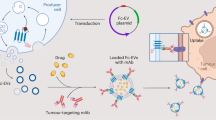Abstract
The involvement of 5-hydroxytryptamine (5-HT) 5-HT3 receptors in the mechanisms of severe emesis evoked by cytotoxic drugs or by total body irradiation have been studied in ferrets. Anti-emetic compounds tested were domperidone (a dopamine antagonist), metoclopramide (a gastric motility stimulant and dopamine antagonist at conventional doses, a 5-HT3 receptor antagonist at higher doses) and BRL 24924 (a potent gastric motility stimulant and a 5-HT3 receptor antagonist). Domperidone or metoclopramide prevented apomorphine-evoked emesis, whereas BRL 24924 did not. Similar doses of domperidone did not prevent emesis evoked by cis-platin or by total body irradiation, whereas metoclopramide or BRL 24924 greatly reduced or prevented these types of emesis. Metoclopramide and BRL 24924 also prevented emesis evoked by a combination of doxorubicin and cyclophosphamide. These results are discussed in terms of a fundamental role for 5-HT3 receptors in the mechanisms mediating severely emetogenic cancer treatment therapies.
This is a preview of subscription content, access via your institution
Access options
Subscribe to this journal
Receive 24 print issues and online access
$259.00 per year
only $10.79 per issue
Buy this article
- Purchase on Springer Link
- Instant access to full article PDF
Prices may be subject to local taxes which are calculated during checkout
Similar content being viewed by others
Author information
Authors and Affiliations
Rights and permissions
About this article
Cite this article
Miner, W., Sanger, G. & Turner, D. Evidence that 5-hydroxytryptamine3 receptors mediate cytotoxic drug and radiation-evoked emesis. Br J Cancer 56, 159–162 (1987). https://doi.org/10.1038/bjc.1987.177
Issue Date:
DOI: https://doi.org/10.1038/bjc.1987.177
This article is cited by
-
A systematic review of methodologies, endpoints, and outcome measures in randomized trials of radiation therapy-induced nausea and vomiting
Supportive Care in Cancer (2017)
-
Cisplatin-induced emesis: systematic review and meta-analysis of the ferret model and the effects of 5-HT3 receptor antagonists
Cancer Chemotherapy and Pharmacology (2011)
-
Double-blind, randomized, parallel-group study on the efficacy and safety of oral granisetron and oral ondansetron in the prophylaxis of nausea and vomiting in patients receiving hyperfractionated total body irradiation
Bone Marrow Transplantation (2000)
-
Supplementation of general anaesthesia with tramadol or fentanyl in parturients undergoing elective Caesarean section
Canadian Journal of Anaesthesia (1998)
-
New perspectives in antiemetic treatment
Supportive Care in Cancer (1996)



